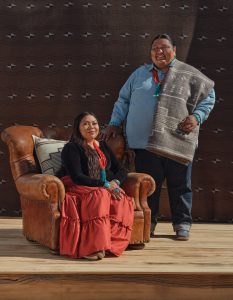Wellness focuses that aim to reduce issues, including anxiety and overwhelm, often seem like necessary solutions to a fast-paced modern world. In reality, though, wellness as a concept has deep, interconnected roots that most often lead back to the lifestyle practices of Native American communities.
In that sense, you could argue that wellness is actually society’s way of stepping back towards this ancient focus. In this article, we’ll consider the wellness lessons from these communities that hold particularly widespread relevance today, and how they can apply regardless of where or how people choose to live.

# 1 – The Need for a Natural Approach
Native communities have always had strong ties with nature. From sustainable, hand-to-mouth farming practices to a deeper understanding of our interconnectedness with nature, all of these priorities can help to inform a better wellness outlook. Time outside has certainly been proven to be an effective way to reduce stress and improve general health and mental outlook, and that’s true regardless of your circumstances.
Equally, the use of natural and herbal medicines for the sake of wellness ultimately takes its roots from native living. For instance, sacred medicine traditions have undeniably influenced modern trends towards plant-derived CBD products like those offered by CBDistillery, which are famously used for benefits including anxiety reduction and sleep improvements. Incorporating everything from CBD to sage burning and more, can be an effective, natural way to live your best life, whichever life you’re living.
# 2 – Having a Holistic Outlook
Native communities have always adopted a holistic outlook, which understands that true health and wellness rests not on one aspect of living, but across the full spectrum of an individual’s spiritual, emotional, and social health. This full-body view is the first thing that native healers consider when treating a patient, and it’s finally finding its place in how we also approach modern medicine.
When it comes to wellness, this ability to prioritize the interconnectedness of experience is especially important for everyone. After all, while cutting down on negative practices like spending excessive time online might be helpful in one aspect, the benefits will likely be short-lived or ineffectual without an indigenous ability to also incorporate physical movement, socialization, and so on.
# 3 – Keeping Community Central
Community is always at the heart of traditional indigenous outlooks, and is always highlighted by community solidarity and close social circles. This is at odds with our very individualistic modern view of wellness, and it’s perhaps the best wellness lesson we can learn from native traditions.
While individual wellness focuses like meditation and yoga hold benefits that no native community would deny, the modern habit of doing these things under cover goes directly against traditional teachings. In native communities, these practices tend to be far more effective when approached within large communal groups. As such, joining classes which could include yoga, walking groups, or similar, could have a far more transformative personal impact.
Wellness has far-reaching native roots, and we could all benefit from following where they lead!











